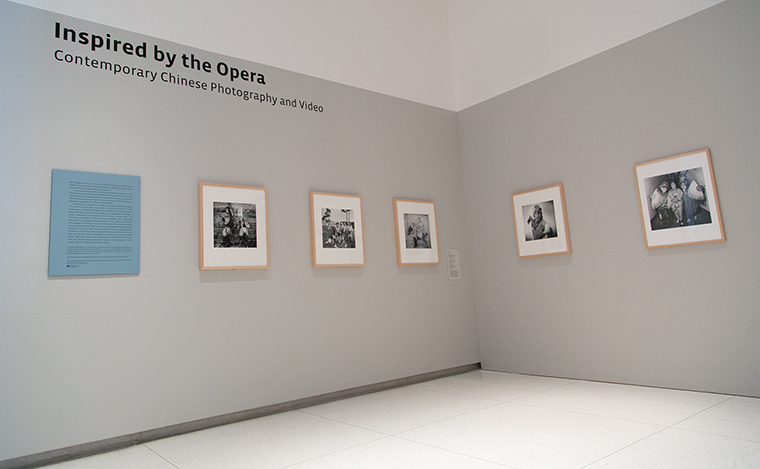Traditional meets contemporary
February 24, 2014
Traditional Chinese porcelain vases, painted scrolls and brightly colored robes are juxtaposed with modern Chinese photographs and videos in a new joint exhibit meant to highlight aspects of old and new Chinese culture through opera.
The joint exhibits, titled “Performing Images: Opera in Chinese Visual Culture” and “Inspired by the Opera: Contemporary Chinese Photography and Video,” will be displayed at the Smart Museum of Art at the University of Chicago, 5550 S. Greenwood Ave., through June 15.
The exhibits show both ancient and modern Chinese art that has been influenced by Peking opera. Peking opera, or Beijing opera, is a traditional Chinese art form that combines visual, vocal and acrobatic performance. The actors’ faces are painted white or covered with a mask to accentuate their flowing, vibrant robes.
“Chinese culture is so old and has such a history,” said U of C art history student Giuliana Vaccarino Gearty. “There’s so much to work from. It’s interesting that photography is something so modern and this is something so traditional. It’s interesting that modern photographers would want to connect themselves to that legacy and this traditional thing.”
Performing Images, an exhibit that focuses on Chinese history, features rare Chinese works of art, such as vases and other everyday objects, from the Qing (1368-1644) and Ming (1644-1911) dynasties. “Inspired by the Opera”—which features works from the late 1990s to early 2000s—includes black and white photographs of men dressed in women’s Peking opera attire as well as metaphorical videos that involve opera aesthetics to illustrate the influence that opera has had on Chinese art and culture.
U of C Professor Judith Zeitlin, co-curator of “Performing Images,” sees direct connections between the two exhibits in the way they connect to the Peking opera.
“There sort of is a mutual influence going on,” Zeitlin said. “You get so much more out of the contemporary show when you realize there’s this whole other visual tradition that [it is] drawing upon.”
“Inspired by the Opera” features five photographs and two short looping videos played on two small screens. Two longer videos are played on a big screen in its own connected room. The tone of the second room is darker. One of the longer videos switches back and forth from a scene depicting the demolition of a town in China and a scene showing a Chinese woman applying makeup while donning a traditional Peking opera robe.
U of C Professor Wu Hung, curator of “Inspired by the Opera,” included four artists in the gallery: Liu Wei, Chen Qiulin, Liu Zheng and Cui Xiuwen.
Each artist’s work experiments with photo and video elements to discuss current issues in China, such as the destruction of entire towns, while simultaneously incorporating traditional Chinese opera elements.
Hung said the artists’ work is more recognized in America than China because the art of photography is a more established form in the States.
“Photography and video were new to Chinese artists in the late ‘80s, and in the ‘90s they began to use video,” Hung said. “Photography is not a Chinese form.”
Wu said he thinks Chinese artists are influenced not only by their own cultural history, but by new forms of art in the West.
“The artist introduces interaction between a new art form like video and some traditional elements. This contradiction excites them,” Wu said. “It’s not purely East or West; it’s not purely Chinese or a continuation of the past, but rather an interaction between past and present and between East and West.”
The exhibits are part of the Envisioning China: A Festival of Arts and Culture at U of C, which runs through June 15. The festival features more than 40 events and exhibits, including a Peking opera, a concert of Chinese composers, the Shanghai Quartet, a new original play about sex and imperialism and several other musical and theatrical performances. The festival will run for five months to celebrate Chinese culture with their audiences.








